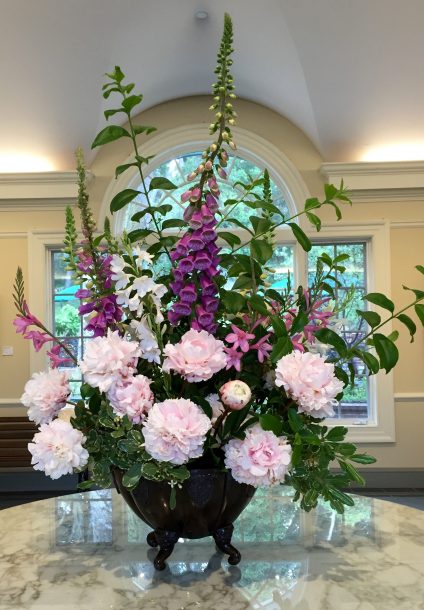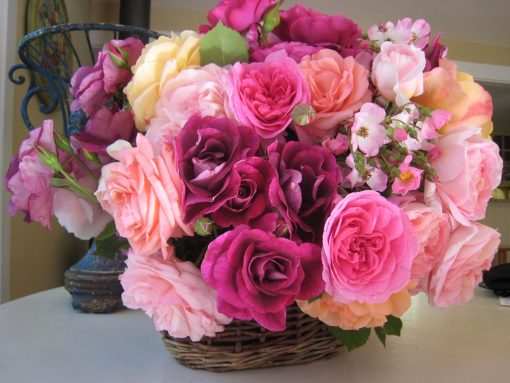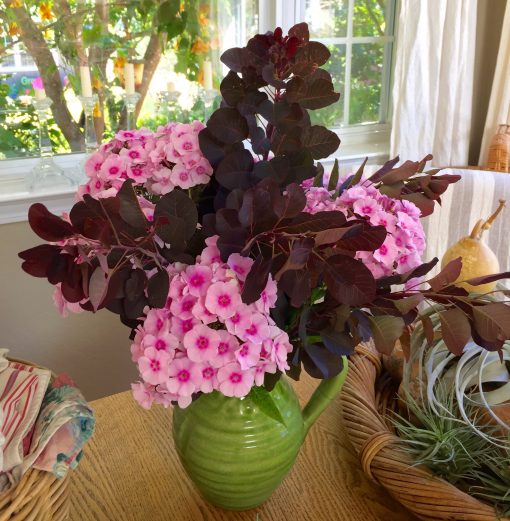
Until about 100 years ago, one of the most important areas of any large garden was the cutting garden where flowers were harvested like a crop and taken inside for display. Today our lifestyles and tastes are reflected in bouquets that are more casual. The bouquets you make from garden grown flowers, interesting foliage branches, grasses, vines and even herbs always seem to have more personality and cottage garden softness than ones bought from the store. So if you picture yourself strolling out in your garden, bucket in hand to cut beautiful richly colored, fragrant bouquets for your own home or to give to family or friends here are some tips that will make that happen.

Flowers that lend themselves to cutting with long stems and a long vase life can be incorporated into any spot of the garden but if you enjoy lots of cut flowers indoors you may want to set aside a small bed primarily for an old-fashioned cutting garden. A seldom used side yard would be an ideal place as long as it receives at least a half day of sun. Or how about that narrow bed along the fence you never know what to do with? if you’ve never planted in the soil of your future cutting garden, amend the soil generously with organic matter or compost. Then water to germinate weed seeds and hoe them off. Don’t turn the soil again as you’ll bring up more weed seeds. Now you’re ready to plant.
Perennial flowers are prized as cut flowers. Many annuals are good as well as grasses or the strap-like leaves of flax or cordyline. Prunings from the smoke tree, oakleaf hydrangea, grapes and Japanese maple look handsome in bouquets, too.
What can you still plant this time of year for cutting? Marigolds, cosmos and zinnias are annuals that are quick to germinate and easy to grow. Snapdragons are great cut flowers also. A tip for zinnias to make them last longer is to pick the flowers then they open but before pollen shows otherwise they don’t open well. Both hummingbirds and butterflies like zinnias.

Perennial flowers are among the most prized of all cut flowers. Coral bells, scabiosa, gerbera daisy, mimulus, hosta, aster, yarrow and shasta daisy can be planted now, too. Delphinium, kangaroo paw, alstroemeria, penstemon, copeopsis, dahlia, gloriosa daisy and coneflowers are just a few more of the stars of a cutting garden.
Native flowers that last for a week or more include clarkia and sticky monkeyflower. Yarrow and hummingbird sage will last 4-6 days.
While just about any plant material that strikes your fancy will work in a mixed bouquet there are four types of plant forms that naturally look good together: Spires for height and architectural properties with flowers like liatris, snapdragon, gladiola, salvia, Bells-of-Ireland as well as the strappy leaves of flax or cordyline. Round flowers such as roses, dahlias, long-stemmed marigolds and peonies provide focus. Lacy flowers are fillers- ferns, baby’s breath, dill. Foliage from shrubs such as abelia, breath of heaven, California. bay, ornamental grasses, grapes and other vines, herbs, woody tree branches like smoke tree and Japanese maple which also look handsome in a bouquet.
A deconstructed arrangement separates each type of flower into their own vase or container instead of grouping them in a mixed bouquet. Vary the size and shape of the vases and containers and group them together to create a unique vignette.
All bouquets are beautiful.
